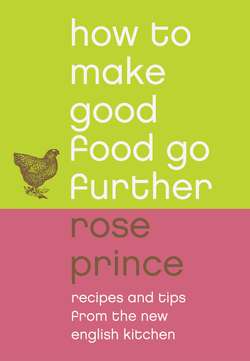Читать книгу How To Make Good Food Go Further: Recipes and Tips from The New English Kitchen - Rose Prince - Страница 36
Making the most of stale bread
ОглавлениеIt is easy to glance around the kitchen and say, ‘I have nothing in the house’, but that is not strictly true if the end of a loaf is lurking in the bread bin. This section of the bread chapter is intended to change ‘I have nothing …’ to ‘hmmm, well perhaps …’, or even to, ‘I have eggs, I have some herbs and I can make toast …’ Then there are breadcrumbs, so quick to defrost after storage in the freezer, then fry in olive oil with a little garlic and parsley to serve with pasta, or use as a coating for meat that has been hammered thin (see here).
The art of making bread go further has become almost extinct – partly because of the preservatives in commercially baked bread, but also because it is the kind of hand-me-down information that disappeared when mothers stopped cooking and broke the chain of food lore. It is not that recipes using stale bread are old-fashioned – Tuscan bread soups are now championed by contemporary chefs as one of the most delicious things in the world. Their recipes invariably suggest using the ubiquitous ciabatta but it is fine to make use of that old loaf of everyday bread.
Good bread deteriorates faster than sliced and wrapped factory-baked loaves containing preservatives such as citric acid. They will not, however, develop a mould quickly, but gradually dry out during the week. My experience with factory-made breads is that they deteriorate suddenly approximately six days after they are bought, when an outbreak of mouldy spots appear and the whole lot must go in the bin.
Sourdough bread, on the other hand, has an extraordinary life. The crust will dry but no spots appear for up to two weeks. Because it costs more, I tend to scrape or cut any mould away and continue popping the bread under the grill, where it obediently becomes springy inside and crisp on the outside – edible again.
This is what a home-made loaf can give, assuming it yields 10 slices of bread. Half the loaf is eaten fresh over a day for breakfast, or in packed lunches; 4 slices of the drying remains are toasted and put in the bottom of four soup bowls, then a vegetable broth spooned over; the remainder is made into breadcrumbs. Half the breadcrumbs are used to coat some hammered chicken thigh meat and the other half fried with herbs and nuts beside a separate dish of roast pheasant or partridge. Fifty pence goes a long way with food.
